Nowadays, Taipei has no shortage of Indian restaurants. Just check my Uber Eats order history. But any authentic international feed needs knowledgeable chefs not only cooking their home cuisine, but unbending to local tastes. India’s savory, spicy and creamy is not an immediate match for Taiwan’s sweet tooth and spice aversion, leading to many peculiar hybridisms and, ultimately, disappointment. If your korma is indistinguishable from your butter chicken, you know you’ve gone wrong.
But Three Wishes (神燈搓一下) in Taipei’s Daan District (大安) is in a league of its own. It’s spicy when I ask it to be, then it’s gluttonously creamy and coco-nutty; it’s unapologetically authentic.
New Delhi native Andy Singh Arya is owner, head chef and social media personality over on the Three Wishes Instagram page, where his larger-than-life personality shines, cracking jokes using his impressive Mandarin skills acquired from over 20 years on the island. His many restaurants have become a Taiwanese staple for great, home-style, authentic Indian cuisine, and the legacy lives on at Three Wishes. Yes, this three-themed restaurant was once known as something perhaps more Bollywood. New name, same menu, we won’t ask.
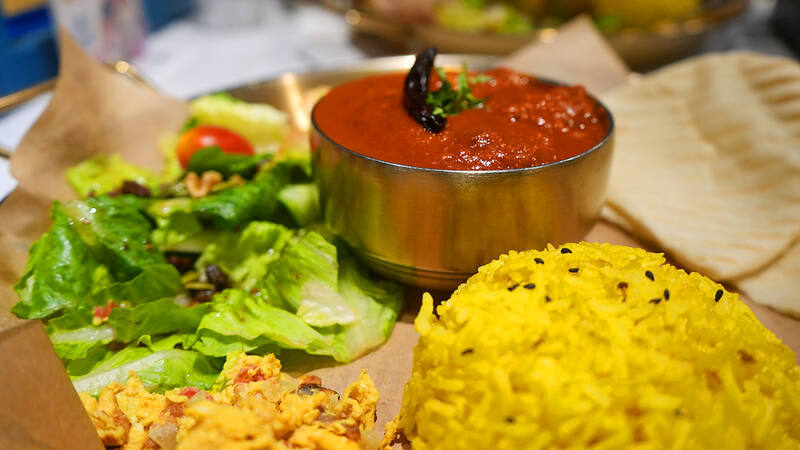
Photo: Hollie Younger
Walking in, toasty spices hit us like a tidal wave; cumin, garlic, garam masala. The space is equally warm and inviting, and almost every table is busy on a rainy Tuesday evening. The open kitchen is rushing out dosas comically twice the width of the plate; South India’s crispy-pancake-like cylinders packed with potato and various fillings. We sit by the window under bejeweled lanterns and get to ordering.
The menu is at first baffling; Three Wishes’ mission statement is to bring together cuisine from around the world; not just north and south Indian curries and dosas, but Mexican burritos and tacos, Middle Eastern hummus and grilled meats, plus some truffle fries and cheese sticks thrown in for, apparently, the sheer hell of it.
If I learned anything from Gordon Ramsay’s Kitchen Nightmares, stick to what you know and keep the menu small, please. We go for an Indian-only selection under the pretense that’s what they know best. We were right, it was flawless.
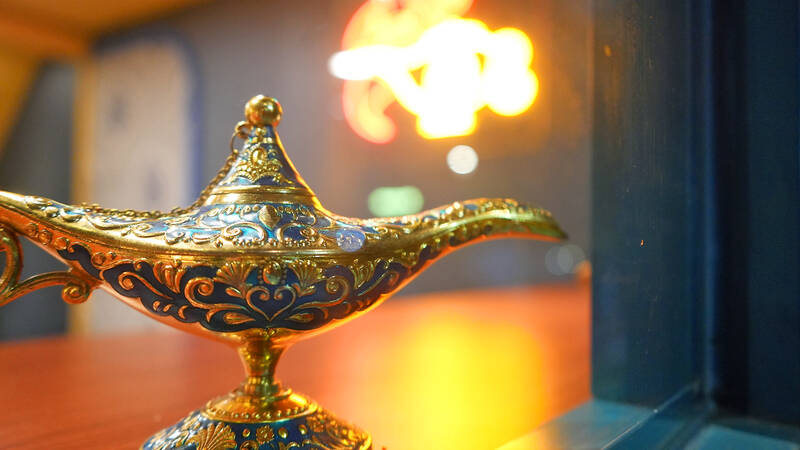
Photo: Hollie Younger
Three Wishes lamb vindaloo (NT$320) is the single best Indian curry I’ve tried in the city. On ordering, we’re warned: this is extremely spicy — are you sure? It arrives with a demonic dark chili atop, an ominous, waving red flag.
Now, my only complaint would be, it was an awful lot of hullabaloos for what is essentially a medium spiced curry. Madras level, if you will.
But it didn’t need to be blow-your-head-off, burn-your-mouth spicy. Unexpectedly and delightfully, the flavor carrying the dish is that slow-cooked, fall-apart-in-your-mouth lamb. That distinctively rich meaty flavor takes the starring role, with a by all means powerful spice hit playing backup singer, the sign of a great curry stewed for many hours.
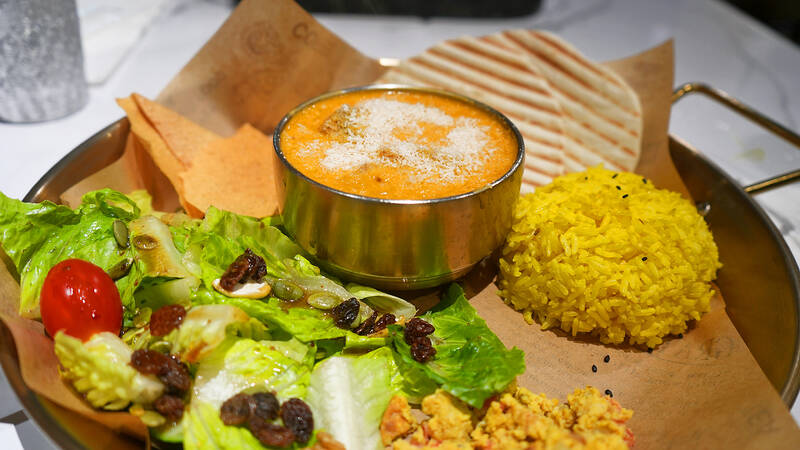
Photo: Hollie Younger
All the curries generously include a salad and small side, rice, papad and slabs of naan bread to soak up all that goodness.
Our second curry is another iron-clad recommendation. The Goa Fish Curry (NT$400). Once again, these guys nailed the protein: not an afterthought or an accompaniment, but always the star of the dish. Perfectly cooked, sizeable hunks of white fish, no bone or gristle in sight. Topped with freshly grated coconut, this creamy, mild curry is like a korma with a wallop more flavor. Its nutty, decadent and a fantastic contrast to the acid of the zingy, tomato-based vindaloo.
The portions are pretty big — in hindsight, a starter was wholly unnecessary, but the Pani Puri (NT$200) is a nice traditional touch. A beloved Indian street snack, these hollow balls of wispy thin batter are cracked open and filled with a curried potato mixture and finally a kind of spicy “water,” then popped in the mouth whole. These are relatively light and refreshing as an appetizer, and certainly texturally adventurous. The samosas (NT$400) on the other hand, in their doughy enormity, did push us towards competition eating territory.
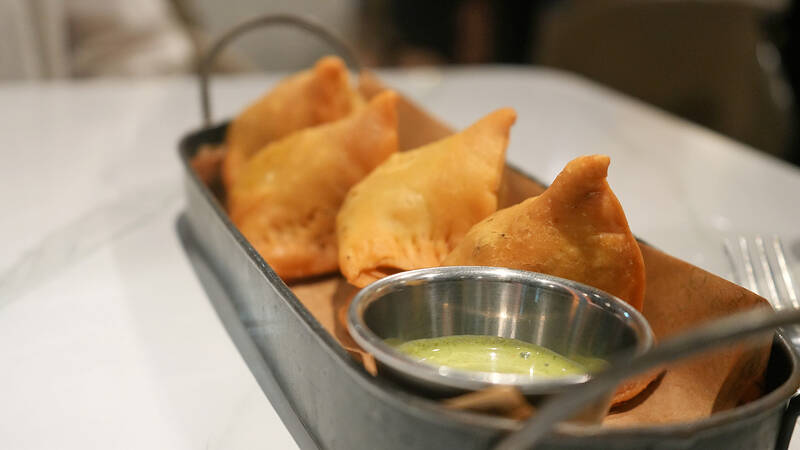
Photo: Hollie Younger
Singh Arya’s restaurants are the stuff of Taipei legend for a reason; for curries with spice, soul and bold flavors, he’s yet to be beaten.
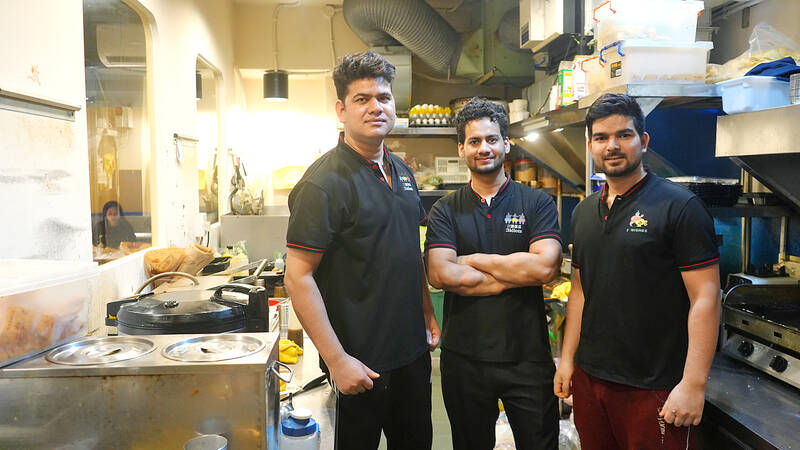
Photo: Hollie Younger
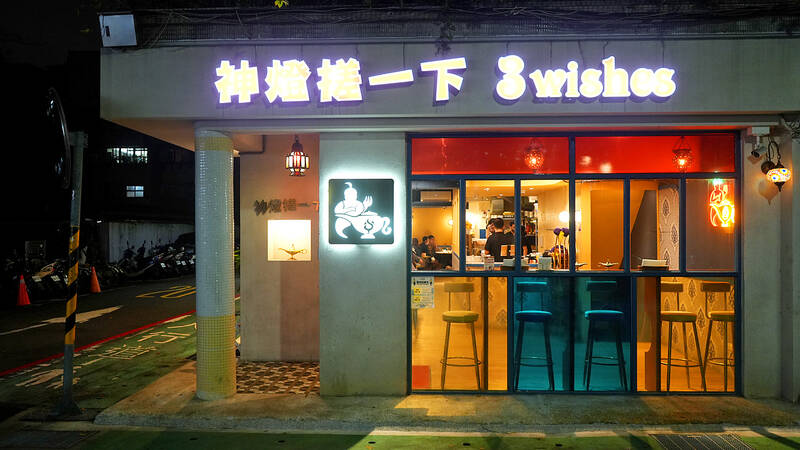
Photo: Hollie Younger
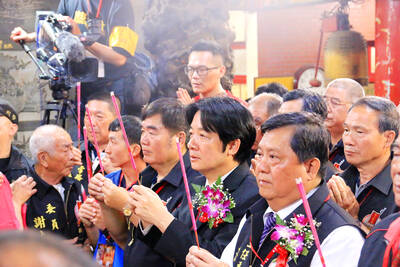
The Democratic Progressive Party (DPP), Chinese Nationalist Party (KMT), and the country’s other political groups dare not offend religious groups, says Chen Lih-ming (陳立民), founder of the Taiwan Anti-Religion Alliance (台灣反宗教者聯盟). “It’s the same in other democracies, of course, but because political struggles in Taiwan are extraordinarily fierce, you’ll see candidates visiting several temples each day ahead of elections. That adds impetus to religion here,” says the retired college lecturer. In Japan’s most recent election, the Liberal Democratic Party lost many votes because of its ties to the Unification Church (“the Moonies”). Chen contrasts the progress made by anti-religion movements in

Taiwan doesn’t have a lot of railways, but its network has plenty of history. The government-owned entity that last year became the Taiwan Railway Corp (TRC) has been operating trains since 1891. During the 1895-1945 period of Japanese rule, the colonial government made huge investments in rail infrastructure. The northern port city of Keelung was connected to Kaohsiung in the south. New lines appeared in Pingtung, Yilan and the Hualien-Taitung region. Railway enthusiasts exploring Taiwan will find plenty to amuse themselves. Taipei will soon gain its second rail-themed museum. Elsewhere there’s a number of endearing branch lines and rolling-stock collections, some

Last week the State Department made several small changes to its Web information on Taiwan. First, it removed a statement saying that the US “does not support Taiwan independence.” The current statement now reads: “We oppose any unilateral changes to the status quo from either side. We expect cross-strait differences to be resolved by peaceful means, free from coercion, in a manner acceptable to the people on both sides of the Strait.” In 2022 the administration of Joe Biden also removed that verbiage, but after a month of pressure from the People’s Republic of China (PRC), reinstated it. The American

Chinese Nationalist Party (KMT) legislative caucus convener Fu Kun-chi (傅?萁) and some in the deep blue camp seem determined to ensure many of the recall campaigns against their lawmakers succeed. Widely known as the “King of Hualien,” Fu also appears to have become the king of the KMT. In theory, Legislative Speaker Han Kuo-yu (韓國瑜) outranks him, but Han is supposed to be even-handed in negotiations between party caucuses — the Democratic Progressive Party (DPP) says he is not — and Fu has been outright ignoring Han. Party Chairman Eric Chu (朱立倫) isn’t taking the lead on anything while Fu